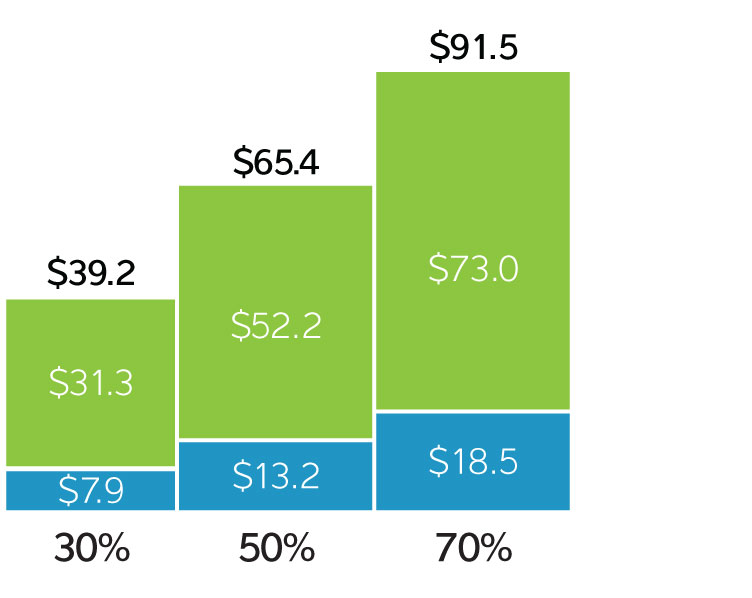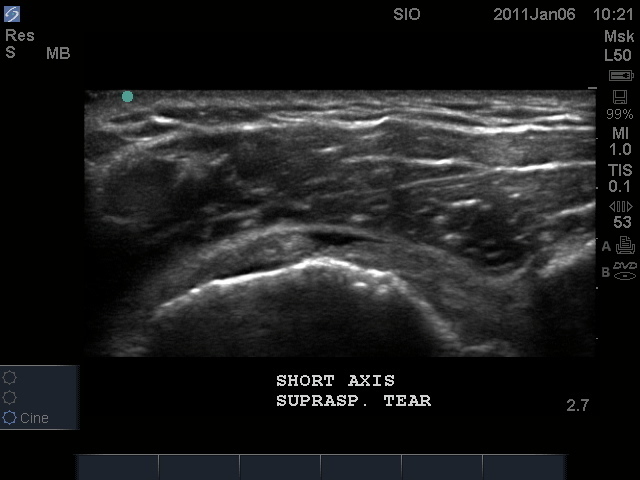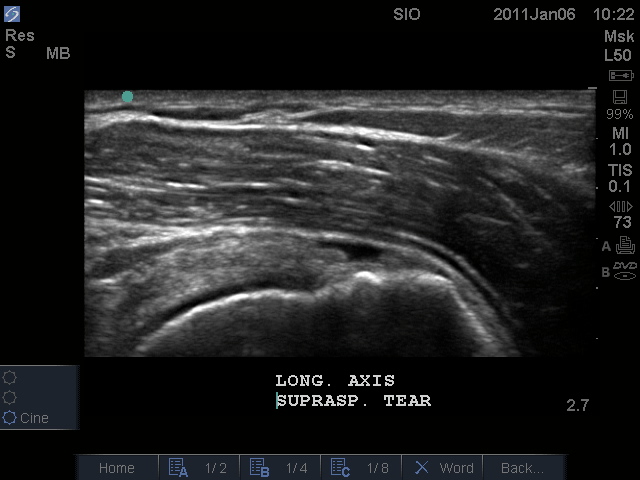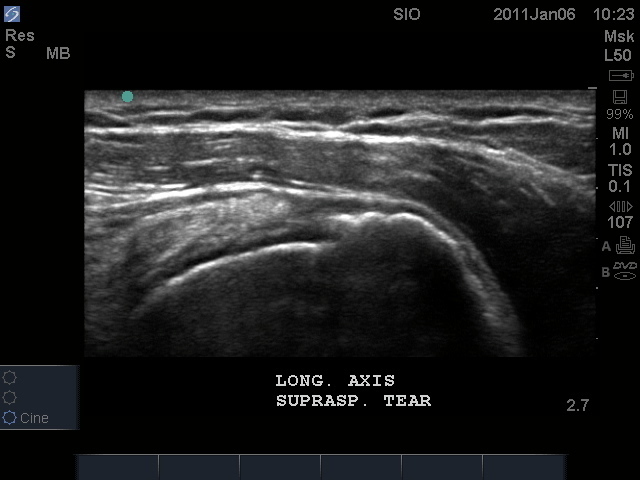Clinical evidence and research supports using ultrasound as the first diagnostic test for numerous musculoskeletal (MSK) conditions. Diagnostic ultrasound offers a number of important advantages compared to computed tomography (CT) and magnetic resonance imaging (MRI), in terms of safety and effectiveness.
Ultrasound is Non-Invasive, Less Costly, Real-Time Imaging
Diagnostic ultrasound is noninvasive and offers real-time imaging, allowing for examinations of structures at rest and in motion. This ability to capture the movement of musculoskeletal components differentiates it from other imaging modalities and can permit more accurate diagnoses. Other advantages for your patient include its portability, which allows for point-of-care application and interpretation.
Yet, for a variety of reasons, healthcare providers have gravitated toward more expensive imaging modalities over time. Use of such imaging modalities, like CT and MRI, instead of lower-cost alternatives such as ultrasound, may not ensure better outcomes, and also increases the cost to the healthcare system and to your patients.
'Ultrasound First for MSK' Could Save Millions of Dollars
In 2009 alone, CT and MRI accounted for 95% of Medicare allowed charges for all extremity imaging. Only 5% was for ultrasound, which is cost-effective and avoids the inherent risk of radiation exposure. Using a lower cost and a safer approach to imaging would make clinical sense for many conditions without compromising care. An article by Parker et al., published in 2008, indicates that the substitution of MSK ultrasound for MSK MRI, when appropriate, would lead to savings to Medicare of more than $6.9 billion in the period from 2006 to 2020.1

Distribution of Medicare allowed charges for extremity imaging, 2005 to 2009 (carrier billed services only)
MRI joint upper and lower extremity
MRI upper and lower extremity
CT upper and lower extremity
U/S extremity

Saving money for our nation’s healthcare system
Estimated reductions in 2009 Medicare spending with substitution of diagnostic ultrasound for CT and MRI imaging (in Millions)
Rotator cuff injuries
Ankle injuries
A report by KNG Health Consulting LLC2 found that if ultrasound was used first in a diagnostic algorithm, our nation’s health care system could realize significant cost savings.
KNG’s examination of 2009 Medicare data showed that if ultrasound was used first in diagnosing just 30% of rotator cuff injuries instead of MRI or CT, the savings would have exceeded $31 million.
Using ultrasound first in only 30% of ankle injuries would have saved approximately $8 million.
And if ultrasound was used first in 70% of the diagnostic evaluations for both conditions—rotator cuff and ankle injuries—the combined savings to Medicare would have been more than $91 million.



What Sonosite MSK Customers Say About Ultrasound for Tendon Injuries
"Point-of-care ultrasound is a perfect tool for screening patients with shoulder and elbow problems in the primary diagnostic setting. A torn tendon in the shoulder can be diagnosed easily, no matter which tendon is affected." Read More
Professor Markus Scheibel, Head of the Shoulder and Elbow Department, Germany’s Charité – Universitätsmedizin Berlin
Report References
1 Parker, et al. Musculoskeletal imaging: Medicare use, costs, and potential for cost substitution. Journal of American College of Radiology. 2008: 182:188.
2 Koenig L, Ruiz D, Cornejo A. Potential cost savings from the use of diagnostic ultrasound in the Medicare population. KNG Health Consulting LLC, 2011. Prepared for Sonosite, Inc.
Selected Additional References
Smith TO, Back T, Toms AP, Hing CB. Diagnostic accuracy of ultrasound for rotator cuff tears in adults: A systematic review and meta-analysis. Clin Radiol. 2011; 5 (ePub).
Rogers CJ, Cianca J. Musculoskeletal ultrasound of the ankle and foot. Phys Med Rehabil Clin N Am. 2010;21(3):549-57.
Allison SJ, Nazarian LN.Musculoskeletal ultrasound: evaluation of ankle tendons and ligaments. CAJR Am J Roentgenol. 2010;194(6):W514.
Morvan G, Busson J, Wybier M, Mathieu P. Ultrasound of the ankle. Eur J Ultrasound. 2001;14(1):73-82.
Swen WA, Jacobs JWG, Algra PR. Sonography and magnetic resonance imaging equivalent for the assessment of full-thickness rotator cuff tears. Arthritis Rheum. 1999;42:2231-2238.

